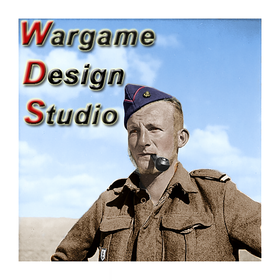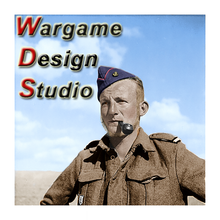France '40 - Designer Insight & Scheldt '44 update
As promised in the recent 4.02 release for France '40, Mike Prucha has penned some background on the features included in this update. Mike's commentary follows;
Many of the new features of France ’40 have already been descripted in a preview blog post from last summer. I don’t want to retread everything and will just provide an example of the new bridge destruction detachments in action and highlight a few items not covered in previous posts. In case you missed the summer blog post, it can be found here: France '40 Sneak Peek
Bridge Demolition Detachments
As noted in the previous blog post and release and with the 4.02 release, some variants of the larger scenarios now use small bridge demolition detachments to represent the pre-planned demolition programs carried out in France, Luxembourg, Belgian, and the Netherlands. From the June preview:
These demolition teams are small engineering units with sufficiently high assault values to consistently damage bridges (with some probability of failure). They are loaded into the reinforcement dialogue and will arrive fixed at their assigned bridge, mostly on May 10th and 11th with a few coming on the 12th. They are Single Use (meaning they are withdrawn after 1 turn in play) and have no hard or soft attack range, so they can only be used for the purposes of bridge demolition. If the demolition attempt fails, then the bridge will remain intact, and the Allied player will need to send an engineer unit if he wants to try again. There is a possibility that a demolition attempt could trigger German fire. The Allied player, for his own reasons (probably to facilitate a retreat or future advance), could choose not to use a demolition team, though it will still disappear at the end of the turn and if he later wanted to destroy the bridge, he would need to send a normal engineer unit.
Here's an example of how this plays out, using a little stretch of Territorial Command Friesland’s front between Barnflair and Barger-Compascum:
(Note: All images can be clicked for full-size where applicable)
Note that the above example is not always typical – more often the bridge detachments are not under immediate German pressure and have more success in carrying out their demolitions.
To keep track of the arrived bridge detachments in the larger scenarios, the Allied player may find it useful to Highlight Engineer units This can be done by clicking the engineer icon on the tool bar, using the hot key 'E', or selecting View->Highlight->Engineer Units.
Scenarios
Four additional small to medium scenarios have been created since the summer preview: Lummen, 2nd Stonne, Yser, and a scenario covering the French defense of Dunkirk in June.
#0512_07_Lummen_WDS covers a rearguard action on the Albert Canal and pits the Belgian 14th Infantry Division against the German 14th Infantry Division.
#0523_03_Stonne_WDS continues the action in the Stonne sector. The battered 3rd Motorized Infantry Division must withstand a massed infantry assault by the German VI Corps. With a very high density of infantry and artillery, this scenario is more WWI than Blitzkrieg.
#0529_02_Yser covers the aftermath of the Belgian surrender as the British and French attempt to establish a defense east of Dunkirk.
#0602_01_Dunkerque covers the final battles at the beleaguered channel port. The remaining British are withdrawn shortly after the scenario begins, leaving the French to fight alone.
Additionally, several of the old “Prucha” scenarios have been expanded to better represent the complexities of the actions represented or to provide players with some additional breathing room. Below are the new Maastricht, Sedan, Dinant, and Gembloux scenarios. The approximate extent of the original scenarios blocked off in red and the additional map area in blue.
Note that most of the Namur fortress area is no longer included in the Gembloux scenario. This eliminates the need to represent the Belgian withdrawal toward the end of the scenario.
Order of Battle
Most of the order of battle changes were discussed in the summer preview, but here are a few other overlooked units that are included in 4.02.
The Onderzoekings- en Bewakingsdienst Bovenrivieren (“Upper River Reconnaissance and Security Service”) or OBB was a small gunboat flotilla attached to Brigade A which guarded the Nederrijn and the Waal. Composed of antiquated Thor-class gunboats and a K-class torpedo boat, the OBB was ill-suited for modern warfare yet nonetheless played an important roll in preventing the seizure of the Nijmegen bridges. Other Dutch gunboats are represented at Rotterdam, Hellevoetsluis, and Amsterdam.
The Groupes francs motorisés were improvised cavalry units formed in late May and mostly assigned to reinforce the Paris garrison. The composition of each group varied with a mix of truck-borne and motorcycle rifle platoons, anti-tank elements, and tank or armored cars. Many of the groups utilized the rare Renault AMC 35 cavalry tank. In some regards, the AMC 35 was a superior vehicle with speed and firepower that were more than a match for most 1940-era Panzers. The AMC 35 also had a larger crew with a dedicated tank commander, eliminating some of the inefficiency that plagued the SOMUA S-36 and other French AFVs. Despite these advantages, the AMC 35 never entered full-scale production due to chronic mechanical issues and an exceptionally high breakdown rate. Many were sold off to Belgium as the ACG-1. Note that the organization of the Groupes francs have been simplified with rifle and AT platoons consolidated into a single element and tank and armored car platoons consolidated.
Several dozen independent and provisional Senegalese Tirailleur battalions were formed in Metropolitan France between April and June of 1940. Some were used to form the 9e division d’infanterie colonial, others relieved Metropolitan units in the Mediterranean coastal defenses and the Spanish border, still others were never armed and played no role in the campaign whatsoever. One of them, the 19e bataillon autonome de tirailleurs sénégalais was used to reinforce the Paris garrison in late May and later saw action during Fall Rot. 19e BATS is now represented in the OOB as part of the General Reserve and will arrive on May 27th.
Future F40 Projects
As extensive as 4.02 updates are, France ’40 Gold is still not 100% complete. There are still some parts fo the map (particularly the southwest) that need to be further embellished and reviewed, and, by adding the Vosges, we have run into the limitations of only having thirteen elevation contours. Elevations are currently capped at 650 meters (some of the highest elevations in the Ardennes), but Vosges is actually much higher. We hope to someday find a solution to this, either by re-scaling the contours across the board or adding new contour intervals to represent the higher elevations. Additionally, there are a small handful of actions that I would like to cover in small scenarios (Neufchâteau, Longwy, Cambrai) and there is the possibility that we may create some additional campaign variants – possibly hypothetical variants where the Allies are not encouraged to intervene in the Netherlands or pursue the less ambitious “Plan E” deployment in Belgium, and possibly a campaign scenario starting on May 13th or 18th. These could be a long way off as David Michas and I have a couple of other projects going, including a very exciting early war title.
Thank you Mike for the above words. We hope that has given a little more background into some of the changes included in the latest France '40 upgrade.
Finally, Panzer Campaigns Scheldt '44 had been held back awaiting updates from the designer (the aforementioned Mr Prucha!). They have now been completed and the 4.01 patch and Changelog are available for this title on the Panzer Campaigns Update page here. Any purchases of Scheldt '44 from this point on will be the 4.01 version.
We are working on the updates for Modern Campaigns and we hope to have those in your hands very soon.





















In all these updates I have seen no mention of correcting the position of Fort Eban Emanuel. In the present game map it is 1 kilometre from the Albert Canal, in reality one border of the fort sat on the Albert Canal. Further it took 3 days for the garrision to surrender and during that time the Germans on top enjoyed none of the benefits of the fortifications. Yet in game they not only ahistorically eliminate the garrision on landing but are then fortified against any Belgian attempts to eliminate them. While this may seem like a minor thing it makes me dubious of the accuracy of other features of the game and is a pity as the developers seem to be trying to get it right.
An excellent read, but I must call you out over being such a tease. ‘David Michas and I have a couple of other projects going, including a very exciting early war title’. I wonder what that could be. Poland, perhaps Finland 39? Either way, take my money!
Awesome! I think I have to get Franche’40 now! Looking forwar to the release of The Great Northern Was aswell! :) Thank you, guys, for all the hard work you put in! Happy holidays!
Leave a comment